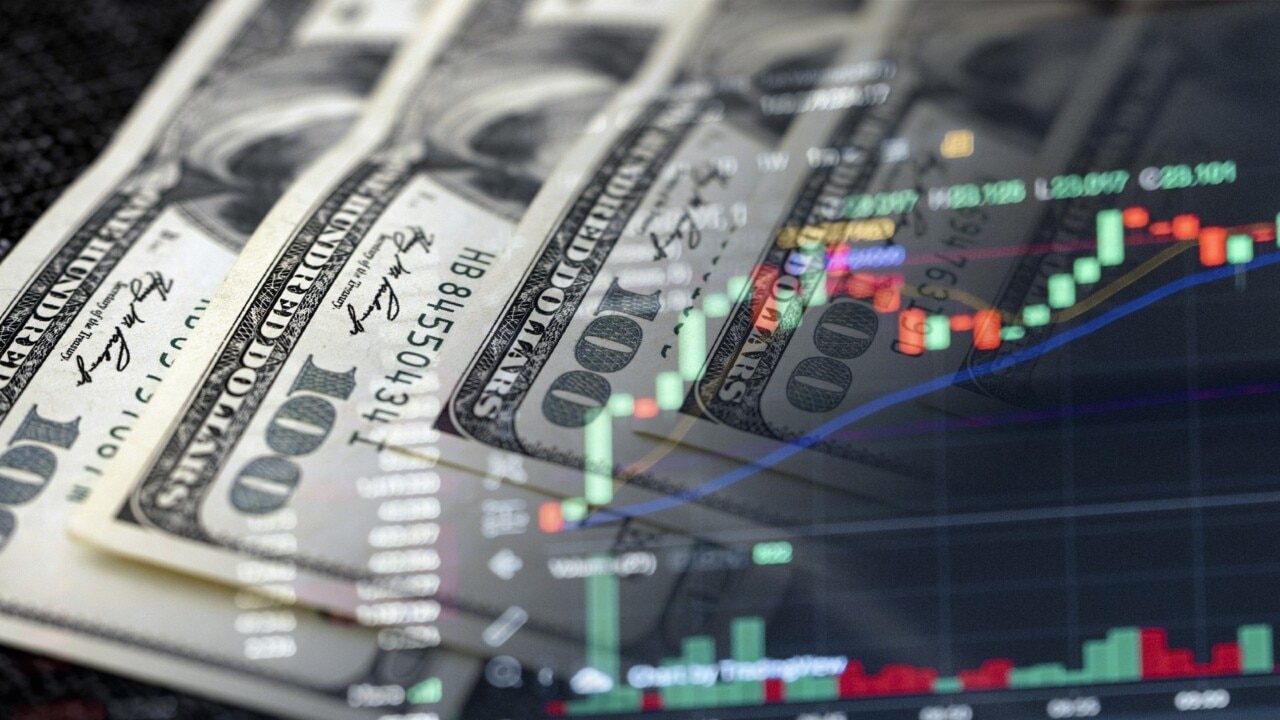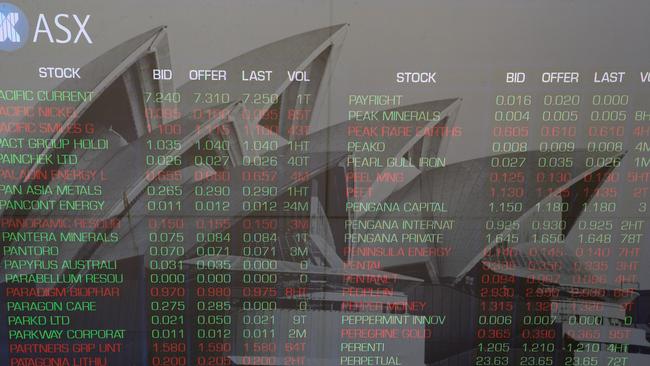Tougher going as profits outlook downgraded
The August reporting season can’t be blamed for a sharp fall in the sharemarket this month, but could yet contribute to the current sell-off.

The August reporting season can’t be blamed for a sharp fall in the sharemarket this month, but could yet contribute to the current sell-off.
After rising 2.9 per cent in July, the S&P/ASX 200 has fallen 4 per cent so far this month to a six-week low of 7115.5 points. A 2.6 per cent fall last week was the worst weekly loss in the past 12 months.
But the ASX 200 has actually done better than offshore markets in recent weeks.
The MSCI All Country World index has suffered an even bigger fall of 5.7 per cent, after rising 3.5 per cent in July, showing that the Australian sharemarket has just been tracking global markets
China’s Shanghai Composite has fallen more than 6 per cent to an eight-month low amid a tepid policy response to China’s worsening economic outlook and bankruptcy risk among property developers.
The S&P 500 is down 4.8 per cent, with the Nasdaq down 7.4 per cent at an eight-week low as economic resilience and a budget blowout lift bond yields to their highest point since 2007.
The falls come as global markets have entered what are often the weakest three months of the year.
“From the August high, the ASX 200 has fallen 4.6 per cent … but could easily go another 3-5 per cent from here given market sentiment is so poor,” said Bell Potter’s head of institutional sales and trading, Richard Coppleson.

He said a relatively large amount of uninvested cash on the sidelines has meant that dips in the Australian sharemarket have been limited this year. Buyers could come in if it extended the current fall to 10 per cent, implying that he thought a fall to 6725 points was possible.
While the underlying strength of the domestic economy and its support for corporate earnings continues to surprise analysts this reporting season, the evidence of slowing revenue growth, “sticky” inflation and labour challenges continue to cloud the outlook, according to UBS.
At the halfway point of the June half-year reporting season by market capitalisation, the number of companies that had beaten consensus estimates for the period exceeded the number that missed by two to one, said UBS Australia equity strategist Richard Schellbach.
But the number of companies for which the consensus estimate for FY24 profit has subsequently been revised down has exceeded the number of upgrades by three to one.
“Companies are conservative and telling us it’s going to get tougher,” Mr Schellbach said.
“Companies appear keen to draw attention to how well they have managed their businesses over the past year; however, a cautious hand guides their outlooks.”
He said there had been twice as many companies issuing negative guidance versus positive guidance, which was not surprising given the surge in inflation and interest rates in the year to June.
But in his view, many of those downbeat outlooks “could be more a product of tactical conservatism from company management, as opposed to being influenced by depressed trading updates, which for the most part have been OK”.
Perhaps unsurprisingly given the rise in inflation and interest rates, costs are showing up as the “No.1 headache” for companies this month.
“Although outlook statements point to a slowing top-line growth environment, the No.1 challenge for companies so far in this profits season seems to be more on the costs side of the profit and loss statement,” Mr Schellbach said.
“Across sectors, management teams are pointing to the cost growth they are seeing from labour, rent, energy and domestic transport.
“Despite this headwind, margins appear to be holding up, thanks to the still fluid ability of companies to pass on cost increases to their end customer.”

Westpac fell 3.1 per cent on Monday as its trading update showed higher than expected costs.
Analysts noted that a barrage of profit warnings since February helped “lower the bar” for FY23.
“Overall results are beating expectations due to the downgrades since the end of the last reporting season,” Macquarie Equities Australian equity strategist Matthew Brooks said.
“If we compared reported estimates to consensus expectations from six months ago, there would be net misses of 16 percentage points, not a 2 percentage point net beat.”
But this net positive surprise is less than it was in February and August last year.
And there were now more misses than beats on FY23 profit margins after a third of results undershot margin estimates last week, according to Macquarie’s Mr Brooks.
He also noted a “shift towards negative EPS revisions” for the current financial year.
The number of FY24 downgrades is now double the number of upgrades, based on his analysis.
“Guidance still tends to disappoint, especially for REITs where interest cost headwinds are more prominent,” he said. “Soft guidance continues to be a key driver of consensus revisions and share price reactions. While cash flows tend to be better than expected, we continue to see FY24 dividend downgrades that look larger than one would expect given the downgrades to forward earnings.”
Iress dived 36 per cent on Monday after suspending its dividend as it swung to a loss.
Stocks that missed in either of the last two reporting seasons were more likely to miss again, especially if they missed in February. And those that beat last August are much more likely to beat.
“This is likely a sign of quality, in that better business models and management teams tend to beat consistently, while more challenged companies can be repeat disappointers,” Mr Brooks said.
Meanwhile, Morgan Stanley Australia equity strategist Chris Nicol pointed out that a longstanding positive “gap” between the ASX 200’s estimated dividend yield for the next 12 months had “closed”. The 10-year bond yield was more than 10 basis points above the ASX 200 aggregate dividend yield.
“All this reinforces to us that earnings execution rather than multiple expansion should be more important to near-term stock returns,” Mr Nicol said.
The forward price-to-earnings ratio of the S&P/ASX 200 has fallen to about 14.85 times, slightly below a long-term average of about 15 times, and from a recent peak last month near 15.8 times.








To join the conversation, please log in. Don't have an account? Register
Join the conversation, you are commenting as Logout